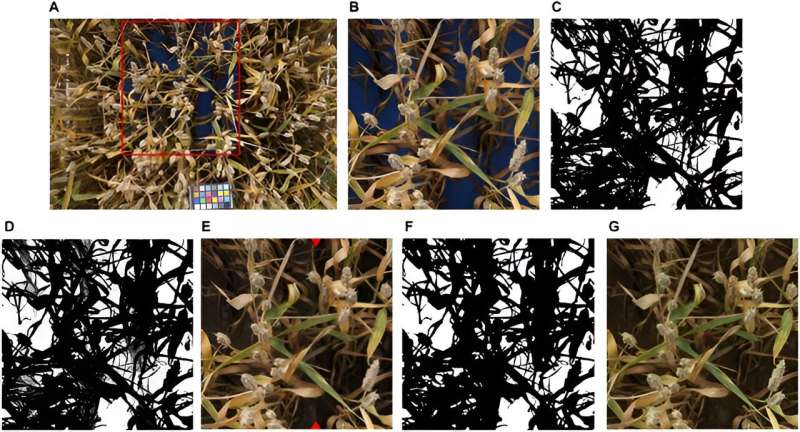Workflow for training data generation. Credit: Plant Phenomics
The yield of wheat crops is influenced by sink strength (grain number and nutrient absorption capacity) and source capacity (photosynthetic tissue efficiency). While sink limitations are widely reported, source limitations due to diseases like septoria tritici blotch (STB) also impact yields, primarily post-anthesis, during grain filling.
Current challenges include differentiating the effects of diseases from natural senescence on canopy greenness. Advances in sensor technology and image analysis, such as deep learning, offer potential solutions yet struggle with creating accurate training data and distinguishing small changes in canopy characteristics over time.
The key research focus now is to develop precise methods to separate the effects of diseases and senescence on wheat crop yields using advanced sensor-based technologies.
In June 2023, Plant Phenomics published a research article titled "Combining High-Resolution Imaging, Deep Learning, and Dynamic Modeling to Separate Disease and Senescence in Wheat Canopies."
This research introduces a novel image processing methodology using deep learning models for semantic segmentation to monitor chlorosis and necrosis in wheat crops, focusing on ears and shoots. The approach involves training a vegetation segmentation model using semisynthetic data, combining image composition and generative adversarial neural networks.
The trained model demonstrated high accuracy in segmenting vegetation in high-resolution RGB images. The overall validation F1 scores were impressive: 0.929 for models trained on raw composite images and 0.951 for those trained on style-transferred composite images.
This indicates that the models were effective in identifying plant parts and their health status throughout different growth phases and under varying light conditions. The segmentation models' performance remained stable across training, especially when multiple composites per plant foreground were used.
The model effectively differentiated healthy, chlorotic, and necrotic tissues, which is crucial for understanding plant health dynamics. Particularly, the method excelled in identifying the onset of chlorosis and necrosis, which are key indicators of plant stress due to diseases or natural senescence.
Applying this methodology to field conditions revealed temporal patterns of greenness decay in wheat crops and differentiated the impacts of diseases like septoria tritici blotch (STB) and natural senescence.
The method's high throughput nature makes it suitable for genetic studies on disease resistance and tolerance. Moreover, the results highlighted the potential of using such image-based approaches for precise and objective monitoring of crop health, enabling a detailed assessment of the physiological status of different plant parts over time.
In summary, this image processing methodology, leveraging deep learning and advanced image analysis, offers a powerful tool for detailed, high-throughput monitoring of plant health at an organ-specific level. It holds significant potential for advancing our understanding of crop responses to biotic stresses and optimizing crop management strategies in the field.
More information: Jonas Anderegg et al, Combining High-Resolution Imaging, Deep Learning, and Dynamic Modeling to Separate Disease and Senescence in Wheat Canopies, Plant Phenomics (2023). DOI: 10.34133/plantphenomics.0053
Provided by NanJing Agricultural University
























